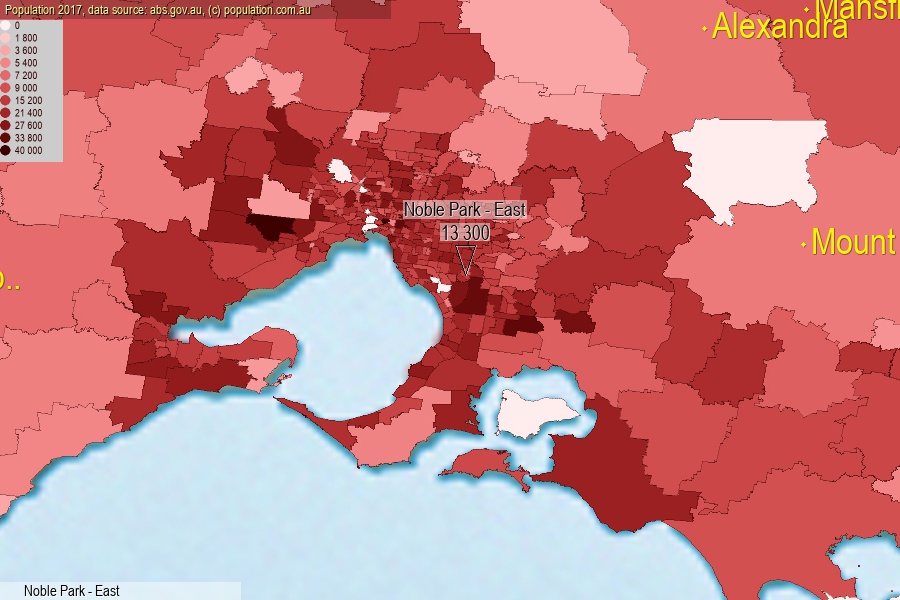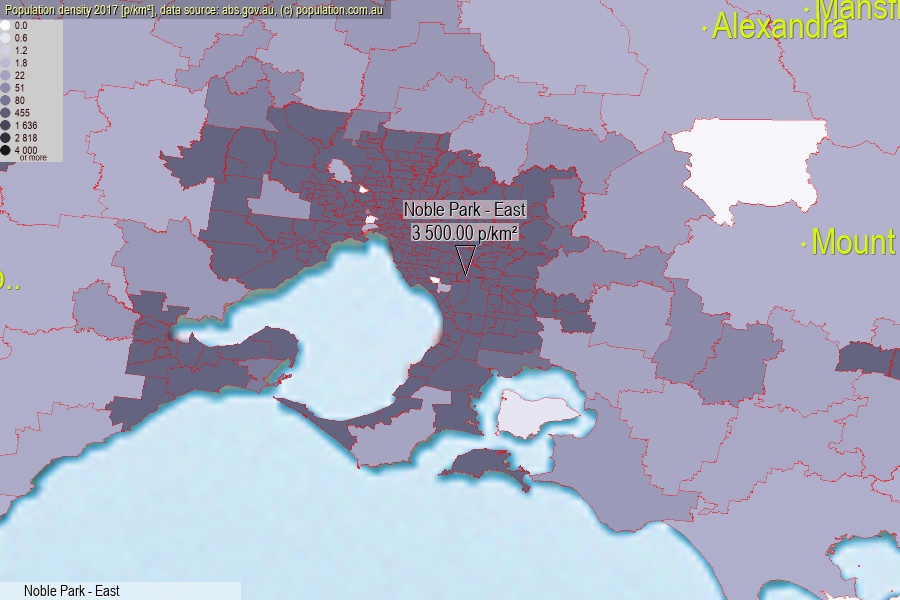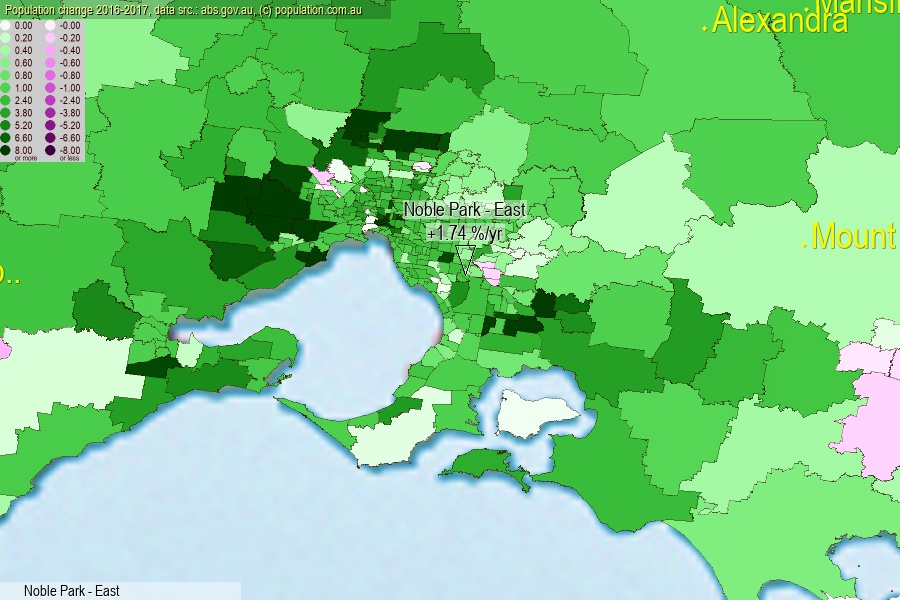 population.com.au
population.com.auLast official estimated population of Noble Park - East (as Statistical Area Level 2) was 13 300 people (on 2017-06-30)[2]. This was 0.05% of total Australian population and 0.207% of VIC population. Area of Noble Park - East is 3.80 km², in this year population density was 3 500.00 p/km² . If population growth rate would be same as in period 2016-2017 (+1.74%/yr), Noble Park - East population in 2025 would be 15 264. [0]



Click to enlarge. Noble Park - East is located in the center of the images.
Population [people], population density [p./km²] and population change [%/year] [2]
View borders » (new window) [4]
[2001-2002] +0.58 %/Yr.
[2002-2003] +0.62 %/Yr.
[2003-2004] +0.78 %/Yr.
[2004-2005] +0.65 %/Yr.
[2005-2006] +1.94 %/Yr.
[2006-2007] +3.66 %/Yr.
[2007-2008] +2.69 %/Yr.
[2008-2009] +3.96 %/Yr.
[2009-2010] +2.27 %/Yr.
[2010-2011] +2.51 %/Yr.
[2011-2012] +1.55 %/Yr.
[2012-2013] +1.77 %/Yr.
[2013-2014] +2.03 %/Yr.
[2014-2015] +1.75 %/Yr.
[2015-2016] +2.12 %/Yr.
[2016-2017] +1.74 %/Yr.
[0] Calculated with linear interpolation from officially estimated population
[1] Read more about SA2 and Australian Statistical Geography Standard (ASGS) on abs.gov.au
[2] Population data from Australian Bureau of Statistics (Population and density: 2017; change: 2016-2017)
[3] Digital Boundaries: Australian Statistical Geography Standard (ASGS) 2016.
[4] Border coordinates are simplifyed using Ramer-Douglas-Peucker algorithm.